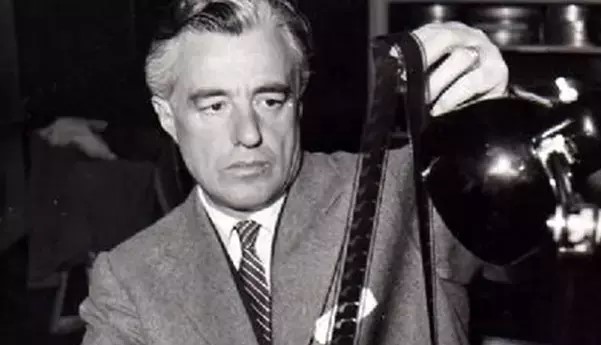The realistic director of the Bicycle Thieves movie: Who is Vittorio De Sica?
In his films, he captured the city of Rome, real people, and the lives of the men on the street, especially the children, with an observation that almost bordered on documentary.

(1902-1974) Italian film director and actor. He is one of the most important representatives of the neorealism movement. He was born on July 7, 1902, in Sora, Italy, and died on November 13, 1974. He grew up in Naples as the son of a middle-class family. His interest in theater led him to appear on stage when he was only in his twenties, and he soon became a famous young man. He founded his own theater in 1935.
After playing various roles in cinema, he attempted to direct. After emotional dramas, in 1942 he shot I bambini ci guardano (“The Children Are Looking at Us”), which is considered one of the first films of neorealism. This film, his first collaboration with screenwriter Cesare Zavattini, told the story of a disintegrating marriage through the eyes of a young child.
Vittorio De Sica (7 July 1901 – 13 November 1974) was an Italian film director and actor, a leading figure in the neorealist movement.
De Sica's collaboration with Zavattini continued with Sciuscia (Street Children) in 1946 and Ladri di biciclette (Bicycle Thieves) in 1948. In both films, he captured the city of Rome, real people, and the lives of the men on the street, especially the children, with an observation that almost bordered on documentary.
The political awareness that screenwriter Zavattini added to these issues enabled the films to avoid being just "stories of little people". Bicycle Thieves in particular brought De Sica international fame as one of the masters of neorealism. These two films created a great impact and provoked reactions.
Vittorio De Sica and Zavattini faced political accusations. De Sica did not quit acting in films. With the money he earned from acting, he started two new productions: Miracolo a Milano (Miracle of Milan) in 1951 and Umberto D in 1952. The Miracle of Milan brought a fantastic dimension to De Sica's ordinary people, presenting social differences and the conflict between the poor and the rich within the framework of a fairy tale. Umberto D is an example where the director reconciles social observation and emotional content most maturely. It reaches tragic proportions when old retiree Umberto D, who has no one but his dog, is gradually pushed out of society.
Vittorio De Sica, whose fame spread widely during this period, directed his first film in the USA upon the suggestion he received from Hollywood. Stazione Termtini, which takes place in 24 hours at the Rome train station, was a film damaged by Hollywood production conditions and far from De Sica's warmth.
La Ciociara (My Daughter and Me), in which Sophia Loren and a touristic Italy look are dominant, can be considered the first harbinger of the decline of his directorship. He was also unsuccessful in ambitious and heavy political issues such as German Nazism, which he addressed in I Sequestrati di Altona (The Prisoners of Altona). After this date, he could not achieve great success except for the small and entertaining parts seen in his films. His cinema, which became old quite quickly, gradually shifted to love movies and melodramas set in Italy. It can be said that the only film in which he was able to appear as a director in his last period was il giardino dei Finzi-Contini (“The Garden of Finzi Contini”).
Vittorio De Sica brought humanitarianism and pure emotional content along with social observation to Italian neorealism. These elements, which were presented in a very shocking way in the early films, ceased to be impressive as time passed because they could not be developed and transformed by the director, which led to repetition.
